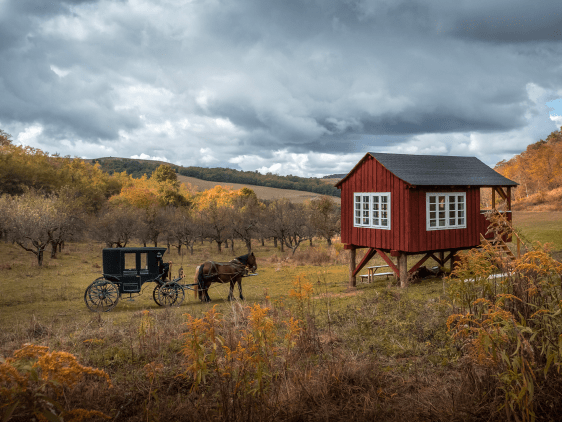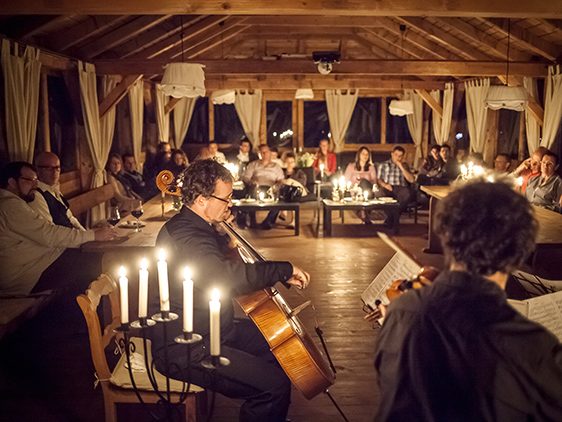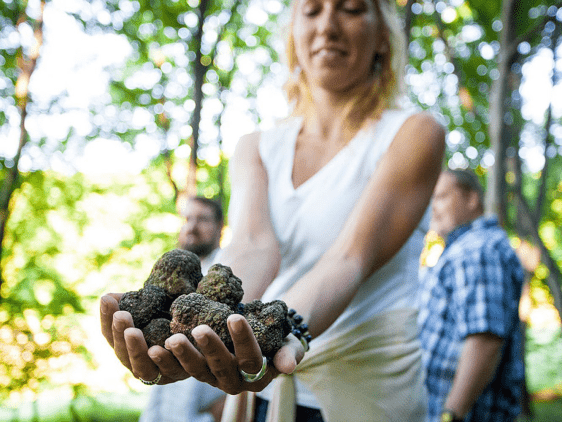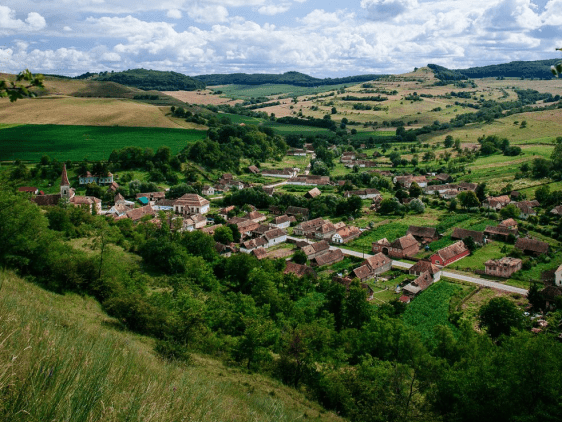The village of Cund carries the Saxon heritage (population of German origin) in the architecture of the houses, in the few traditions that have been preserved to this day and, to our delight, in networks of dishes and desserts from which we also draw inspiration in the preparation of the daily menu.

Grooms from Ghinda/Windau, Bistrița-Năsăud
(picture found on poveștisăsești.tumblr.com)
From gingerbread (Lebkuchen), prepared before Christmas, to handklich, soup with liver dumplings, dry cauliflower au gratin or traditional pies (lychee or hencles / Hanklich / Henklesch), all are to be tried and taken home.
We have collected for you some recipes that you can try on the days when you miss the village of Cund and Transylvania!
Saxon cauliflower au gratin
We need a ½ kg cauliflower, a cube of butter, two onions, two garlic cloves, thinly sliced ham (500 g), 200 g cream, 2 eggs, 100 g grated cheese, salt and pepper.
Wash the cauliflower, open the florets and boil it for 8-10 minutes in salted water. After it has boiled, remove the cauliflower and let it drain for a few minutes, then place it in a heat-resistant dish, greased with butter. While the cauliflower rests in the pot with butter, clean the onions and garlic, chop them finely and saute them in butter or oil. After they get a glassy appearance, put the ham next to it, in the same pan. After we have seasoned the ham a bit, we put all the contents of the pan over the rested cauliflower. Add salt and pepper to taste. Separately, mix the cream with the two eggs and the cheese. We also pour them over the cauliflower and then put the dish in the oven (20-25 minutes) until the cauliflower acquires a golden color.
Sweet cabbage with tomato sauce and meat
We need a large sweet cabbage, some very well-ripened tomatoes, 700 g of pork (neck or leg), two tablespoons of oil, one teaspoon of tomato paste.
We prepare the meat and portion it, put oil or lard on the bottom of the saucepan (if we don’t have a pan) and brown the meat well. After it has browned, add 250 ml of water, cover the saucepan with a lid and let the meat simmer. We clean the cabbage, wash it, cut it into quarters and chop it into strips or chunks. We sprinkle salt over the chopped cabbage and knead it well, until it softens, after which we pour it over the boiling meat. On top of the cabbage in the pot, we also put the sliced tomatoes, tomato paste mixed with a little water and, to taste, hot or sweet paprika. Put the lid back on and let all the ingredients get to know each other and boil at the right heat. We keep stirring from time to time, and after almost an hour we turn off the fire. The cabbage is ready to be served!

The traditional recipe from the book of Martha Liess, Siebenbürgisches Kochbuch, Schiller Verlag, Bonn und Hermannstadt, 2011, p.416 (picture found on gastroart.ro)
Saxon Hencles with cream and butter (Hanklich)
For the dough, we list 2 sachets of dry yeast (or 1 cube of fresh yeast), 700 g flour, 100 g sugar, 2 eggs, 250 ml milk, 50 ml oil, salt, lemon essence.
And for the cream: 10 egg yolks, 500 g of sweet, heavy cream, vanilla essence or vanilla sugar.
We start with the yeast that we dissolve in milk, put a little salt and sugar on top and let it prepare for the cake for 30 minutes.
After the 30 minutes have passed, mix the flour with the rest of the sugar, add the yeast and milk, add the oil and lemon essence. Knead the flour well with the rest of the ingredients until the dough passes the finger test: it is elastic enough and no longer sticks to your hands. We let the dough rest for an hour, while we prepare the cream. We will beat the egg yolks, then add the vanilla sugar and cream and mix them well.
We return to the dough, which we roll out into thin sheets, fold it and stretch it in place a few times. Our dough should be very fluffy and presentable. We are ready to assemble the cake: we will put the dough in the tray (which we will pierce from place to place), and we will spread the cream with the beaten eggs over the dough. We put the tray in the oven and let it bake for around 30 minutes (we set the oven to 200 degrees). Traditionally, the cake is served warm with powdered vanilla sugar on top and with nuts or raisins to taste.
We are waiting for you in the heart of Transylvania, at Valea Verde Retreat, with the table set and the Saxon houses ready for relaxation and vacation.








